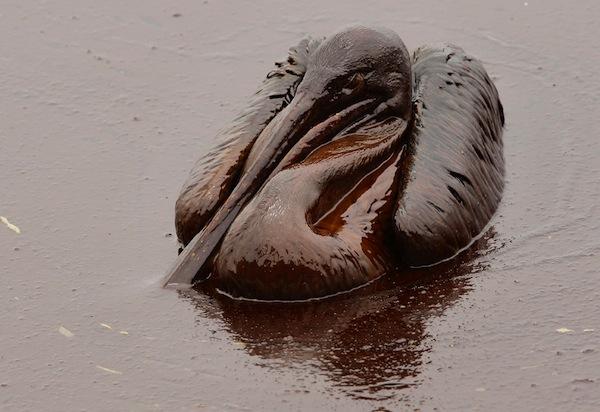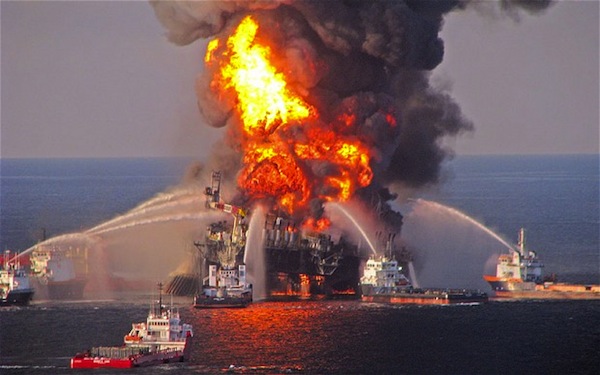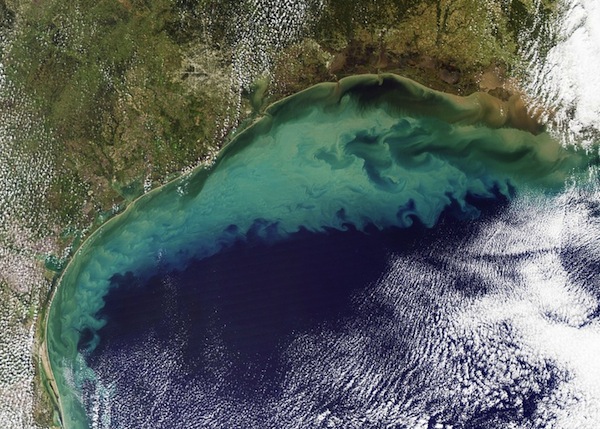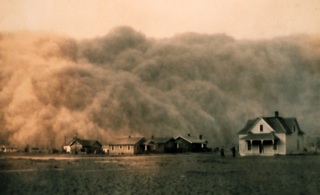7 Major Environmental Disasters in Indian Country

Terri Hansen
Colonization and the corporate mentality that grew out of it have been ravaging Indian country for centuries. But since the 1800s, increased industrialization have stepped up the scale of destruction to Mother Earth. From the BP oil spill in the Gulf of Mexico, to the PCBs left at the General Electric federal Superfund site in Mohawk territory, industry has been as hard on the environment as it has on Indian country. Below, some of the most egregious examples of what industry has wrought on Turtle Island.
1. BP Deepwater Horizon Oil Spill
The worst environmental disaster in U.S. history began when a well below the surface of the Gulf of Mexico blew out on April 22, 2010, followed by an explosion on BP’s Deepwater Horizon rig that killed 11. It spewed over 200 million gallons of crude before it was capped July 16, 2010. The oil and use of toxic dispersants harmed health, curtailed seafood consumption, destroyed jobs, and devastated wildlife. Two years later, the Isle de Jean Charles Band, one of several tribes in the Gulf, reported dwindling oyster and shrimp populations, other forms of marine life dead, and negative health effects to those involved in cleanup efforts. Nor had their tribe yet seen any compensation for their losses.
RELATED: Gulf Tribes Still Struggling a Year After Oil Spill
2. Gulf of Mexico Dead Zone
Another disaster for Gulf tribes is its dead zone, which this year stretched 8,500 square miles. It develops each summer as the Mississippi River deposits fertilizer and animal waste from the Midwest farm belt into Gulf waters, where it fuels explosive algae blooms that deplete oxygen as they die and decompose. Creatures that can swim away do. The others die. It’s suffocating, in addition, the sports and subsistence fisheries that are still recovering from the BP spill, commercial fisheries that were worth $629 million in 2009.
3. Exxon Valdez Oil Spill
The Exxon Valdez supertanker hit a reef in Prince William Sound, Alaska, on March 24, 1989, rupturing 11 cargo tanks and spilling 10.8 million gallons of crude that eventually covered 11,000 miles of ocean. Natives remember it as the day the water died. It’s estimated that 250,000 seabirds, 2,800 sea otters, 300 harbor seals, 250 bald eagles and up to 22 killer whales died, along with billions of salmon and herring eggs. The disaster proved catastrophic both culturally and health-wise to Native peoples, who had to replace their subsistence way of life with a reliance on store-bought goods.
4. Toxic Legacy of PCBs
The St. Regis Mohawks’ neighbor is a federal Superfund site once occupied by General Electric. GE’s facility dumped tons of hazardous waste into landfills that released polychlorinated biphenyls (PCBs), which were banned in 1979. Nearby Reynolds and Alcoa aluminum smelters, now New York State Superfund sites, also released PCBs. PCBs are linked to some cancers and have adverse health effects on the immune, reproductive and nervous systems. Ongoing research through May 2011 has established that high PCB levels in the St. Regis community has produced autoimmune disorders, altered thyroid gland function and lowered testosterone levels.
RELATED: Akwesasne Mohawk Youth Are Still at Risk of Industrial Pollutants
5. Unprecedented Arctic Methane Releases
Climate change is fueling the release of methane, buried in the Arctic permafrost and offshore waters since the end of the last ice age. Patricia Cochran of the Alaska Native Science Commission, speaking of melting permafrost, told ICTMN in 2010, “I think everyone knows methane is [the] worst.” Scientists are concerned that as Arctic ice retreats, warming seas will allow offshore permafrost to release greater quantities of methane, a greenhouse gas more potent than carbon dioxide. Now, scientists fear the bursting of massive methane bubbles may lie in our future.
RELATED: World's Worst Gas Leak: Methane Released as Permafrost Melts
6. Lead’s Worst Toxic Nightmare
The Quapaw deserve two top mentions for the same man-made mess, this one for health impacts. Picher, Oklahoma, part of the Quapaw’s tribal jurisdictional area, was home to productive zinc and lead mining until 1967, when mining companies abandoned 14,000 mine shafts, 70 million tons of lead-laced tailings, 36 million tons of mill sand and sludge and contaminated water, leaving residents with high lead levels in blood and tissues. Cancers skyrocketed, and 34 percent of elementary-school students suffered learning disabilities. The area was declared the Tar Creek Superfund site in 1983, but Picher was deemed too toxic to clean up. Instead, a federal buyout paid people to leave.
7. Dust Bowl
The 1930s Dust Bowl resulted from sustained drought coupled with years of poor farming practices, leaving moisture-depleted topsoil susceptible to winds that whipped it into great, thickened clouds of dust and sand. The agricultural and economic damage devastated residents of the Great Plains, and Native American communities suffered along with the others. An increasing Native population in California was part of the famous Dust Bowl migration.
© 1998 - 2013 Indian Country Today. All Rights Reserved To subscribe or visit go to: http://www.indiancountry.com Read more at http://indiancountrytodaymedianetwork.com/2013/10/08/7-major-industrial-environmental-disasters-indian-country-151661




